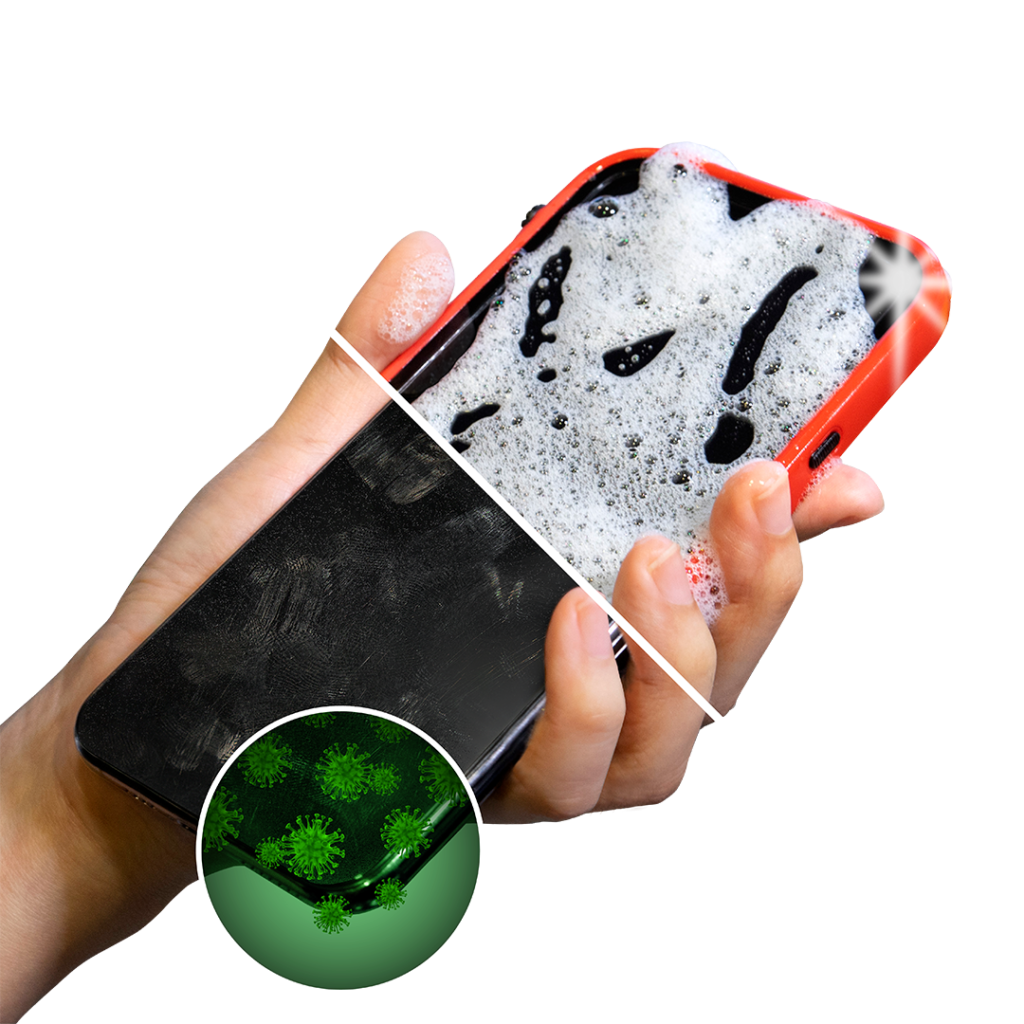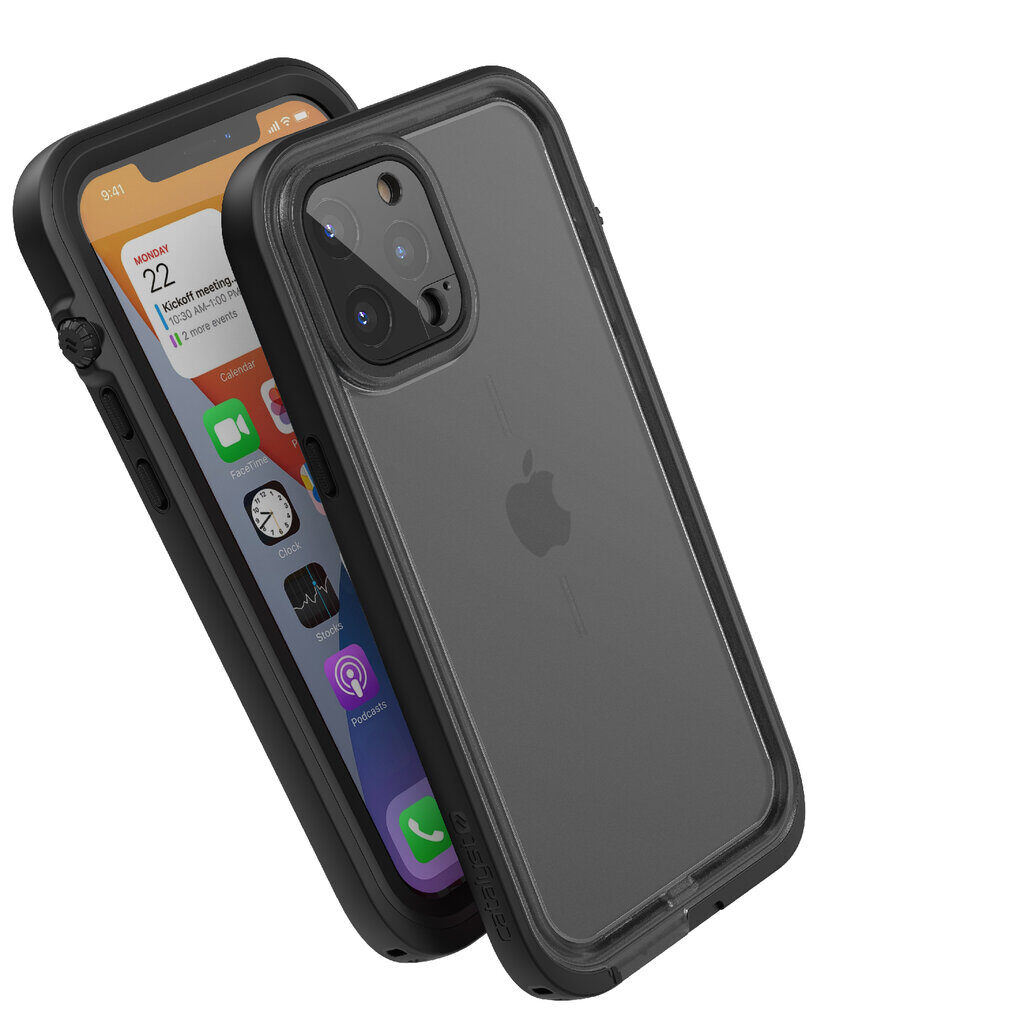
There’s no doubt we’re all trying to be better informed and protect ourselves and loved ones by reducing exposure to the COVID-19 virus and its variants. We’re social distancing, wearing masks and constantly sanitizing and washing our hands, but how many of us think about our smartphone, as a major source of threat to our health?
We’re attached to them almost constantly, even more now than ever in this time of ongoing lockdowns and isolation. But these wonderous mobile devices have also been labeled as a petri dish carrying more germs than a toilet seat, which include the dreaded COVID-19 virus.
Smartphones: Breeding Ground for Germs & Viruses
“They’re a breeding ground for germs, viruses and bacteria. And since we use our devices every day, we touch them, we touch our faces, we usually don’t think about it,” says June Lai, Scientist and co-founder and CEO of Catalyst.
Theoretically, model dependant, you may be able to “wash” your phone. Lai suggests disinfecting hard surfaces following CDC (Center for Disease Control) guidelines, i.e., for example cleaning with soap and water. She alternately recommends using a disinfectant of 70 per cent isopropyl alcohol or 70 per cent ethanol. “proven to protect from 22 types of Corona viruses.”
Certain iPhone models can also be submersible. However, Apple cautions about submerging your device in any cleaning agents or allowing moisture to enter any openings.
Cleaning Agents Destroy Materials
Cleaning agents can also scratch surfaces, destroy valuable coatings like the oleophobic (oil repelling) coating on an iPhone display and seep into your phone’s ports. Even simple soap residue can ruin connectivity and reduce the lifespan of your device.
Having a case on your phone, giving you wipeable surfaces is certainly one step in the right direction, but it too can be affected. Some are not truly 100 per cent waterproof allowing leaks through weak seals. Lai adds that the common use of cleaners like bleach which needs to stay on surfaces for longer periods of time to be effective, can lead to discolouration and changing of the material properties. Over time, these chemical reactions can lead to the material deterioration and affect its integrity. So, your smartphone, case for example, may no longer offer protection from impacts likely one of the key reasons you bought it.
Unless of course, you have the right case.
Catalyst is a high-tech accessories maker founded as a result of the need to protect an iPhone 3GS from the elements. The company has a series of waterproof cases that protect your phone from drops up to 2m (military standard) but also from damage from various types of liquids and disinfectants. They can withstand repeated washings and are disinfectable with soap and water as well as EPA-approved disinfectants, including alcohol.

The cases are precision engineered and rigorously tested to be fully sealed to prevent water, snow, dirt and sand from getting into your device and are submersible in water down to a depth of 10 metres while leaving unhindered access to all your phone’s ports.
When you mention the words case and protection, many assume there’s a trade-off with your phone’s performance, size and style. People often think that a case takes away its sleekness and muffles the sound. The Catalyst series cases are actually slim and attractive. In fact, the iPhone 12 model is only 1.4 cm thick. The front and back are clear so you can see the colour of your phone. It employs patented True Sound Acoustic Technology which make the sound emanating through the case crystal clear. There’s also a built-in optical lens allowing you to shoot great photos and video without removing the case.

Catalyst Cases: Deceptively Simple
Catalyst cases are deceptively simple. In fact, the iPhone 11 case has 46 component parts that are put through rigorous tests, such as waterproof tolerances down to 0.05mm but also adds practical features like a handy, rotating mute switch, and a glove-friendly button. It’s also QI wireless friendly so it can be charged without a cable.
All this helps you operate your phone like the case is not even there while at the same time protecting your valuable investment, and effectively helping you reduce your risk of infection when properly implemented into your daily protection routine.
Lai suggests that you use the same procedure for disinfecting your phone and case as you would for do for taking care of yourself.
It’s good advice. Lai tells us according to DScout, an independent study, the average person touches their phone over 2600 times per day.
Are you one of them?
You can find a selection of Catalyst waterproof cases for various devices at CatalystCase.ca, Amazon.ca, Apple and many of your favourite retailers.
If want to learn more on this topic along with expert advice, a scientific view and suggestions on proper Covid phone safety etiquette, check out our exclusive Toastcaster Podcast interview with June Lai that can also be accessed here in an earlier post. Originally from Vancouver, Canada, Lai is now based in Hong Kong, where she also oversees R&D at the company.
Listen to the Podcast
Photos courtesy Catalyst.
The original Articles appeared in Active-Life Magazine, April 2021.
A syndicated version of the article entitled: Keeping your phone clean is a COVID-19 necessity, also appears at Troy Media and affiliated syndicated sites.
Greg Gazin, also known as the Gadget Guy and Gadget Greg, is a syndicated veteran tech columnist, communication, leadership and technology speaker, facilitator at Crestcom International, blogger, podcaster and author. Reach him @gadgetgreg or at GadgetGuy.ca.


Speak Your Mind